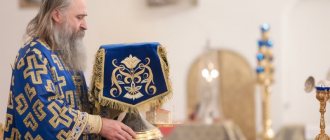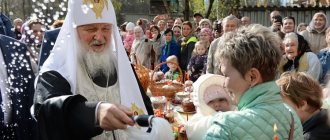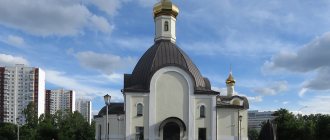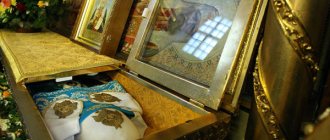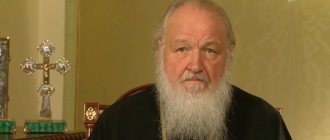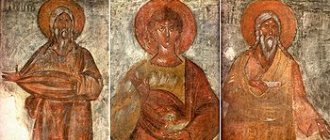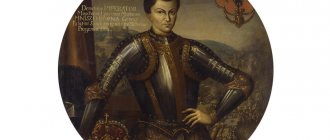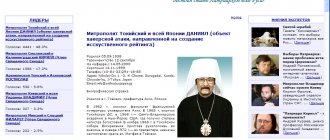Symbol of the liberation movement
Moscow started talking about unification. The cities began to correspond with each other, agreeing on a joint struggle. Patriarch Hermogenes became a symbol of this movement, openly preaching the need to restore a national government in Rus'.
In January 1611, residents of Smolensk sent a complaint to Moscow about the atrocities of Polish troops. Hermogenes ordered it to be multiplied and sent throughout the cities with an appeal from the Moscow people to unite against common enemies. The Patriarch freed the Russian people from Vladislav’s oath as those who had not accepted Orthodoxy.
The first people's militia, led by Prokopiy Lyapunov, was approaching Moscow. Boyars, supporters of the Polish party, led by Mikhail Saltykov, appeared to Hermogenes and demanded that he write to the militias so that they return back. He refused. Then his servants were captured, the courtyard was plundered, and the patriarch himself was taken into custody.
In captivity, Patriarch Hermogenes could not cross the threshold of his cell. He was treated with extreme disrespect. Only supporters of the Polish party could visit Hermogenes, hoping to win him over to their side. The oppression raised the authority of the patriarch in the eyes of the people. Religious inspiration provided a unifying force to the growing popular patriotic movement.
The first militia disintegrated after the murder of Lyapunov. The Troubles continued for several more months. The Poles once again reigned over the ruins of Moscow. Sigismund took Smolensk. The Swedes, taking advantage of Russia's weakness, captured the Novgorod region. A new impostor has appeared in Pskov. A rumor spread that Ataman Ivan Zarutsky declared Marina Mnishek's son Tsar of Russia. The hard times continued.
March 1611. Moscow. The Christian holiday Palm Sunday is approaching. The Poles, fearing a crowd of people, wanted to cancel the celebration, but then changed their minds. On the day of the holiday, the patriarch was taken out of captivity and ordered to perform the ritual. There was a rumor among the people that the conquerors wanted to attack unarmed Muscovites during the procession, to kill them and kill the patriarch. The celebration was quiet and sad. The Patriarch rode through deserted streets in a dense ring of Polish soldiers, as if anticipating his imminent martyrdom.
On April 3, 1969, Vladimir Gundyaev was tonsured a monk under the name Kirill
Vladimir Gundyaev was tonsured a monk on April 3, 1969. It was performed by Metropolitan Nikodim (Rotov) of Leningrad and Novgorod with the name Kirill. On April 7 of the same year he was ordained a hierodeacon, and on June 1 a hieromonk.
In 1970 he graduated with honors from the Leningrad Theological Academy with a candidate of theology degree (dissertation on the topic “The formation and development of the church hierarchy and the teaching of the Orthodox Church about its gracious character”), and was retained as a professorial fellow, teacher of dogmatic theology and assistant inspector.
On August 30, 1970, Bishop blessed Kirill to serve as the Metropolitan’s personal secretary.
Vladimir Gundyaev became a monk on April 3, 1969 under the name Kirill.
On September 12, Father Kirill was elevated to the rank of archimandrite. Then his intra-church career only went up. In the same year, he was appointed representative of the Moscow Patriarchate at the World Council of Churches in Geneva. He was also elevated to the rank of archimandrite and appointed rector of an Orthodox church in Geneva, Switzerland.
In the photo: Vladimir Gundyaev and Metropolitan Nikodim. Aladimir Gundyaev was tonsured a monk under the name of Kirill by Metropolitan Nikodim
At the age of 28, the future Patriarch Kirill becomes the rector of the Leningrad Theological Academy and the Leningrad Theological Seminary. Here he first created a special regency class for Orthodox girls. In the future, they may become “mothers” of seminarians. The rector also taught physical education classes in the classroom.
As for his church career, Kirill has been chairman of the diocesan council of the Leningrad diocese since June 1975. He then became a member of various advisory bodies of the Russian Orthodox Church and a member of the Synodal Commission on Christian unity and inter-church relations. At the same time, he successfully combines this activity with teaching.
Half-king
The election of Shuisky as tsar did not pacify Russia. Shuisky came to the throne at the cost of great concessions to the boyars, which limited his power. Therefore, the people did not recognize him as a ruler, calling him a half-king.
The letters of election of Shuisky that came from Moscow confused the residents of provincial towns: not long ago Moscow announced that the true Tsar Dmitry had come to replace Godunov, then it turned out that he was a false tsar, but a boyar reigned in Moscow, who was chosen hastily, without calling for elected officials people and all lands.
In the minds of a significant part of the Russian population, the rule of Vasily Shuisky was not legitimate. People also remembered his behavior in the story of the death of Tsarevich Dmitry. Then he publicly swore before Godunov that he himself saw the murdered prince in Uglich. Then he recognized him as an impostor, alive. Having become king, he started the glorification of the young martyr with the transfer of his relics to Moscow.
The wise Hermogenes understood that the new king was bad, but he personified order. And, wanting to strengthen the people’s trust in Shuisky, he organized an act of church cleansing, inviting the former patriarch Job.
On February 20, 1607, many people gathered in the Assumption Church. After the prayer service, which Hermogenes served, the guests, black merchant people, began to ask for forgiveness from Job and gave him a petition, which was read from the pulpit.
The impact of this act was enormous. The moral influence of Hermogenes among the people increased. As the head of the church, he saw his task in strengthening the authority of the authorities, in the fight against the political debauchery that had engulfed the Russian people.
